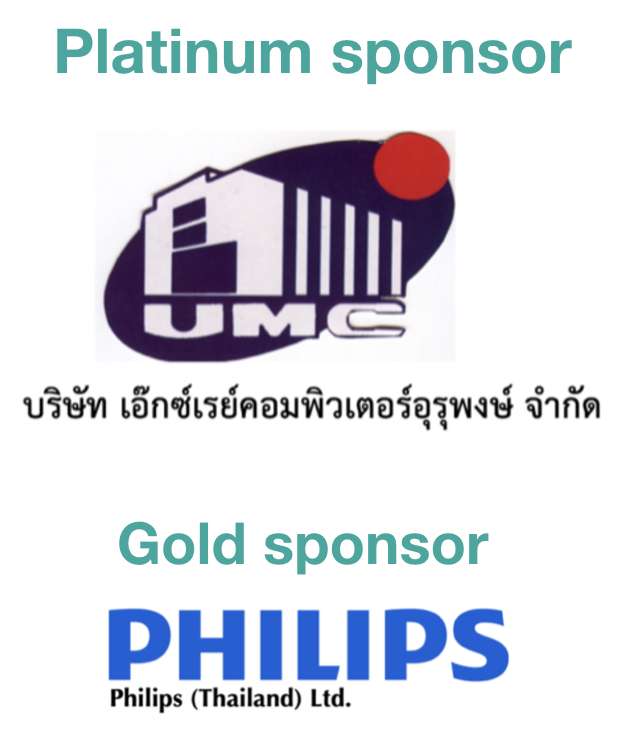Radiotherapy in pelvic malignancies at King Chulalongkorn Memorial Hospital, Thai Red Cross Society
Keywords:
Simulation, Radiotherapy, Pelvic malignancies, patient positioning verification, radiotherapy complicationAbstract
Radiotherapy involves treating malignant cells using beams of intense energy to destroy cancer cells, making precision critical at every step. This process begins with patient preparation, treatment simulation, irradiation, positioning, and the use of appropriate immobilization techniques. However, variations can occur, such as discrepancies between patient positioning during simulation and actual treatment. For patients with pelvic malignancies, maintaining a full bladder and an empty rectum is essential to minimize side effects on surrounding normal organs. Controlling the volume of these organs is challenging, so image verification is necessary before treatment, using methods like EPID (Electronic Portal Imaging Device) or CBCT (Cone Beam Computed Tomography). n brachytherapy, imaging is particularly crucial. At KCMH, both pre- and post-treatment MRI imaging is performed to aid doctors in evaluating and planning treatment. In radiotherapy, acquiring images is a key responsibility of radiologic technologists. Therefore, this article is intended for those interested in enhancing their knowledge of pelvic cancer treatment with radiotherapy at King Chulalongkorn Memorial Hospital, Thai Red Cross Society.
Downloads
References
Chulalongkorn Comprehensive Cancer Center Tumor Registry Unit. KCMH tumor registry Annual Report 2019. Vol 9. Bangkok: V.S.S. group limited; 2022.
Chulalongkorn Comprehensive Cancer Center Tumor Registry Unit. KCMH tumor registry Annual Report 2018. Vol 8. Bangkok: V.S.S. group limited; 2021.
Chulalongkorn Comprehensive Cancer Center Tumor Registry Unit. KCMH tumor registry Annual Report 2020. Vol 10. Bangkok: V.S.S. group limited; 2023.
Gulia A, Patel F, Rai B, Bansal A, Sharma SC. Conventional four field radiotherapy versus computed tomography-based treatment planning in cancer cervix: A dosimetric study. South Asian J Cancer 2013;2(3):132-5.
Stam MR, van Lin EN, van der Vight LP, Kaanders JH, Visser AG. Bladder filling variation during radiation treatment of prostate cancer: can the use of a bladder ultrasound scanner and biofeedback optimize bladder filling. Int J Radiat Oncol Biol Phys 2006;65(2):371-7.
Coia LR, Myerson RJ, Tepper JE. Late effects of radiation therapy on the gastrointestinal tract. Int J Radiat Oncol Biol Phys 1995;31(5):1213-36.
Chen Z, Yang Z, Wang J, Hu W. Dosimetric impact of different bladder and rectum filling during prostate cancer radiotherapy. Radiat Oncol 2016;11(1):103.
Kumkhwao J, Arphasetthasakul N, Amornwichet N, Oonsiri P. Comparison of bladder volume in prostate radiation therapy between simulation and treatment. J Thai Assn of Radiat Oncol 2020;26(1): R13-R24.
Burger J. Radioactive sources in brachytherapy. Radiol Oncol 2003;37(2).
Viswanathan AN, Lee LJ, Eswara JR, Horowitz NS, Konstantinopoulos PA, Mirabeau-Beale KL, et al. Complications of pelvic radiation in patients treated for gynecologic Malignancies. Cancer 2014;120:3870-83.
Dohm A, Sanchez J, Stotsky-Himelfarb E, Willingham FF, Hoffe S. Strategies to Minimize late effects from pelvic radiotherapy. ASCO 2021;41:158-168.
Chumsuwan N, Kowittheeraphong N, Ruedoodee M, Sae-tan M. Setup error assessment of female breast cancer radiotherapy at Songklanagarind Hospital. Thai J Rad Tech. 2022;47(1):35-42.

Downloads
Published
How to Cite
Issue
Section
License
Copyright (c) 2024 The Thai Society of Radiological Technologists

This work is licensed under a Creative Commons Attribution-NonCommercial-NoDerivatives 4.0 International License.
บทความที่ได้รับการตีพิมพ์เป็นลิขสิทธิ์ของสมาคมรังสีเทคนิคแห่งประเทศไทย (The Thai Society of Radiological Technologists)
ข้อความที่ปรากฏในบทความแต่ละเรื่องในวารสารวิชาการเล่มนี้เป็นความคิดเห็นส่วนตัวของผู้เขียนแต่ละท่านไม่เกี่ยวข้องกับสมาคมรังสีเทคนิคแห่งประเทศไทยและบุคคลากรท่านอื่น ๆในสมาคม ฯ แต่อย่างใด ความรับผิดชอบองค์ประกอบทั้งหมดของบทความแต่ละเรื่องเป็นของผู้เขียนแต่ละท่าน หากมีความผิดพลาดใดๆ ผู้เขียนแต่ละท่านจะรับผิดชอบบทความของตนเองแต่ผู้เดียว




